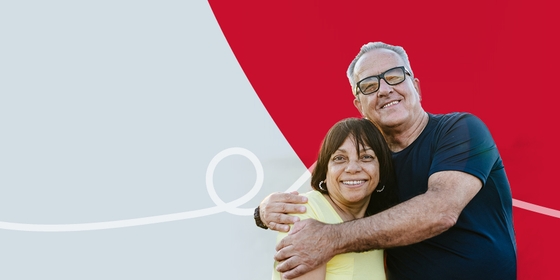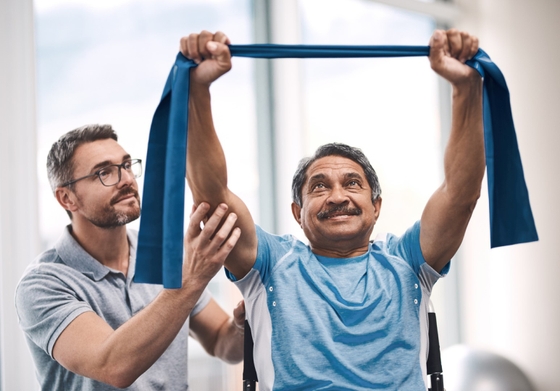
Heart attack recovery – your next steps
Key takeaways
2 min read
- Having a heart attack can be a life-changing event. It’s normal to feel worried, confused or overwhelmed.
- Know the next steps you can take to recover well and get back to doing the things you love. Important steps you can take include:
- attending cardiac rehabilitation
- taking your medicines as prescribed
- understanding your risk factors
- following up with your doctor
- knowing the warning signs of a heart attack and what to do
- reaching out for support when you need it.
Your next steps to recovery and living well with heart disease
There are many things you can do shortly after your heart attack to help you get back to doing the things you love. Click on the headings below for more information about each step.
Attend cardiac rehabilitation
Cardiac rehabilitation (cardiac rehab) programs offer support, education and supervised exercise led by healthcare professionals. Attending cardiac rehab can help you recover and get back to your normal activities sooner. The cardiac rehab team will also create a tailored physical activity program to suit your needs and fitness levels.
By attending cardiac rehab, you’ll also get information about:
- your heart condition and treatment
- returning to your usual activities, like work, driving, physical activity and having sex
- forming heart-healthy habits to reduce your risk of a future heart attack
- managing your medicines
- stopping smoking or vaping (if you smoke or vape)
- knowing the warning signs of a heart attack and what to do in an emergency
- looking after your mental health and wellbeing.
Cardiac rehab programs are available in different formats. You can participate in cardiac rehab:
- over the phone or online
- in person, at a hospital, clinic or community centre
- in a group or by yourself.
Participating in cardiac rehab has many benefits:
- helps you recover more quickly to get back to everyday life
- assists you to cope with what has happened
- helps you to better manage your heart health
- reduces your risk of developing further heart problems.
Your healthcare team will refer you to a cardiac rehabilitation program before you are discharged from hospital.
If you don’t have a referral or need more information, ask your doctor, nurse or health worker. You can also find a local cardiac rehabilitation program near you by searching our Cardiac Services Directory.
Taking your medicine
Your healthcare team will start you on new medicines after your heart attack. It’s important to keep taking these medicines once you leave hospital. They can help keep you feeling well and can reduce the risk of another heart attack.
Common medicines after a heart attack include medicines to:
- manage blood pressure
- manage cholesterol
- stop blood clots forming
- prevent and treat angina (chest pain).
It’s important to know which heart medicines you are taking and what they are for. Your doctor or pharmacist can give you this information. You can also call the free Medicines Line (1300 Medicine or 1300 633 424). Learn more about medicines.
Understand your risk factors
Heart attacks are usually caused by coronary heart disease. There are several risk factors for coronary heart disease. There are some you can manage and some that you can’t. Focus on the things you can manage.
Risk factors you can manage:
- high blood pressure
- high cholesterol
- high blood sugar levels (diabetes)
- unhealthy diet
- being physically inactive
- being overweight or obese
- smoking and/or vaping
- drinking too much alcohol
Risk factors you can't change:
- family history of premature coronary heart disease
- getting older
- being male
- being post-menopausal
- cultural background – people of certain cultural backgrounds, including First Nations peoples, have an increased risk of coronary heart disease.
Learn more about risk factors.
Follow up with your doctor
Regular appointments with your GP are important. They can monitor your blood pressure and cholesterol, make changes to your medicines and check in on your overall health and wellbeing. Your GP can also coordinate your care with other healthcare professionals. They’re there to help, so don’t be afraid to talk about any concerns. Read more.
Know the warning signs of a heart attack
People who have had a heart attack have an increased risk of another one. Know the warning signs of a heart attack so you can act quickly by calling Triple Zero (000).
Common warning signs of a heart attack include:
chest pain or discomfort. This can feel like pressure, squeezing, gripping, tightness, heaviness, burning or crushing
pain or discomfort in any of these areas:
- arm
- shoulder
- jaw
- neck
- back
- shortness of breath
- dizziness or feeling lightheaded
- sweaty
- sick (nausea/vomiting)
- extreme fatigue.
Chest pain is the most common symptom of a heart attack in both women and men. But many people who have had a heart attack also describe having non-chest pain symptoms.
If you have any of these warning signs, it could be a heart attack. Call Triple Zero (000) right away. Every minute counts.
Download our warning signs of a heart attack infographic or order a hard copy of our warning signs magnet.
Reach out for support
Remember, you’re not alone. You can get support after your heart attack by:
- staying connected with family and/or friends
- speaking with your GP
- participating in cardiac rehabilitation
- joining the Heart Foundation’s MyHeart MyLife support program
- joining a Heart Foundation online community.
Learn more about finding support..
References
- Australian Medicines Handbook. Cardiovascular drugs. 2024. Accessed 10 Jan 2025. https://amhonline.amh.net.au/
- Brieger D, Cullen L, Briffa T et al. National Heart Foundation of Australia & Cardiac Society of Australia and New Zealand. Australian clinical guideline for diagnosing and managing acute coronary syndromes 2024. (In draft).
- Commonwealth of Australia as represented by the Department of Health and Aged Care. Australian Guideline for assessing and managing cardiovascular disease risk. 2023. Accessed 14 Feb 2025. www.cvdcheck.org.au
- Redfern J, Gallagher R, Maiorana A et al. Cardiac rehabilitation and secondary prevention of CVD: time to think about cardiovascular health rather than rehabilitation. npj Cardiovasc Health. 2024;1(22). doi: 10.1038/s44325-024-00017-7
- Steen DL, Khan I, Andrade K, Koumas A, Giugliano RP. Event rates and risk factors for recurrent cardiovascular events and mortality in a contemporary post acute coronary syndrome population representing 239 234 patients during 2005 to 2018 in the United States. J Am Heart Assoc. 2022;11(9). doi: 10.1161/JAHA.121.022198
You might also be interested in...

MyHeart MyLife program and support resources
Your next step towards recovery and living well with heart disease

What is cardiac rehab?
Cardiac rehab is proven to keep you out of hospital and reduce your risk of death from heart conditions.

Support after a heart attack
Many different thoughts may go through your head after a heart attack and you may be presented with complicated medical info. Know where to get support.
Last updated01 May 2025
